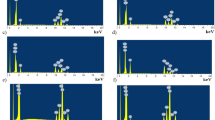Abstract
The first experimental evidence of the existence of the rigid amorphous phase was reported by Menczel and Wunderlich [1]: when trying to clarify the glass transition characteristics of the first main chain liquid crystalline polymers [poly(ethylene terephthalate-co-p-oxybenzoate) with 60 and 80 mol% ethylene terephthalate units] [2], the absence of the hysteresis peak at the lower temperature glass transition became evident when the sample of this copolymer was heated much faster than it had previously been cooled. Since this glass transition involved the ethylene terephthalate-rich segments of the copolymer, we searched for the source of the absence of the hysteresis peak in PET. There, the gradual disappearance of the hysteresis peak with increasing crystallinity was confirmed [1]. At the same time it was noted that the higher crystallinity samples showed a much smaller ΔC p than could be expected on the basis of the crystallinity calculated from the heat of fusion (provided that the crystallinity concept works). Later it was confirmed that the hysteresis peak is also missing at the glass transition of nematic glasses of polymers.
When checking other semicrystalline polymers, the sum of the amorphous content calculated from the ΔC p at the glass transition, and the crystallinity calculated from the heat of fusion was far from 100% for a number of semicrystalline polymers. For most of these polymers, the sum of the amorphous content and the crystalline fraction was 0.7, meaning that ca. 30% rigid amorphous fraction was present in these samples after a cooling at 0.5 K min−1 rate. Thus, the presence of the rigid amorphous phase was confirmed in five semicrystalline polymers: PET, Nylon 6, PVF, Nylon 66 and polycaprolactone [1]. Somewhat later poly(butylene terephthalate) and bisphenol-A polycarbonate [3] were added to this list.
In this paper we also report details on a special effect of the rigid amorphous phase (RAP) on the mobile amorphous phase (MAP): the hysteresis peak at the glass transition of the MAF disappears under the influence of the RAP, and this raises the question whether the glass transition of the MAF becomes time independent in semicrystalline polymers.
Similar content being viewed by others
References
J. Menczel and B. Wunderlich, J. Polym. Sci., Polym. Lett. Ed., 19 (1981) 261.
J. Menczel and B. Wunderlich, J. Polym. Sci., Polym. Phys. Ed., 18 (1980) 1433.
J. Menczel and B. Wunderlich, Polym. Preprints, Div. Polym. Chem., Am. Chem. Soc., 27 (1986) 255.
J. D. Menczel and T. M. Leslie, Thermochim. Acta, 166 (1990) 309.
EM Chemicals Technical Brochure EM-321S-84.
J. W. Goodby and G. W. Gray, Journal de Physique 1979, 40, Colloque C3, page C-3.
J. D. Menczel and T. M. Leslie, J. Thermal Anal., 40 (1993) 957.
J. M. O’Reilly, F. E. Karasz and H. E. Bair, J. Polym. Sci., C6 (1963) 109.
J. D. Menczel, J. Thermal Anal., 49 (1997) 193.
Author information
Authors and Affiliations
Corresponding author
Rights and permissions
About this article
Cite this article
Menczel, J.D., Jaffe, M. How did we find the rigid amorphous phase?. J Therm Anal Calorim 89, 357–362 (2007). https://doi.org/10.1007/s10973-006-8292-9
Published:
Issue Date:
DOI: https://doi.org/10.1007/s10973-006-8292-9




